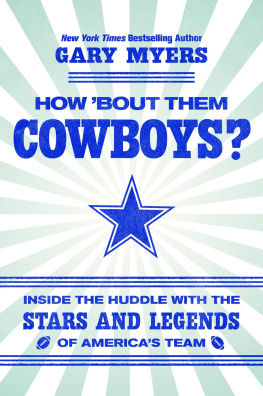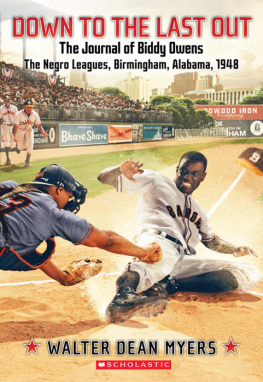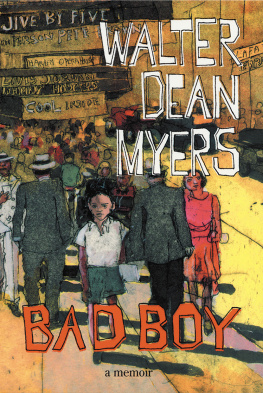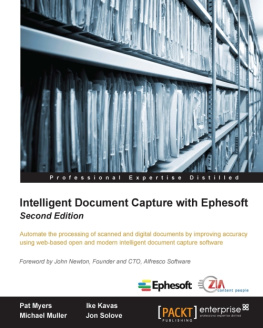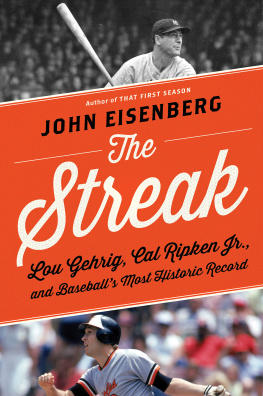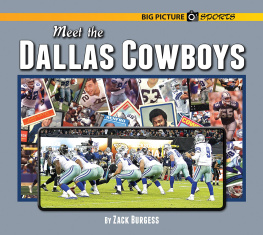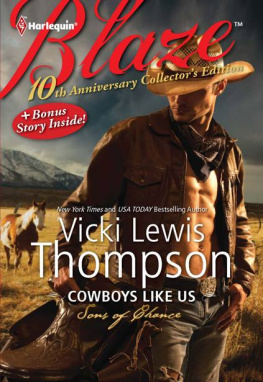
Copyright 2018 by Gary Myers
Cover design by Brian Lemus. Cover copyright 2018 by Hachette Book Group, Inc.
Hachette Book Group supports the right to free expression and the value of copyright. The purpose of copyright is to encourage writers and artists to produce the creative works that enrich our culture.
The scanning, uploading, and distribution of this book without permission is a theft of the authors intellectual property. If you would like permission to use material from the book (other than for review purposes), please contact permissions@hbgusa.com. Thank you for your support of the authors rights.
Grand Central Publishing
Hachette Book Group
1290 Avenue of the Americas, New York, NY 10104
grandcentralpublishing.com
twitter.com/grandcentralpub
First Edition: October 2018
Grand Central Publishing is a division of Hachette Book Group, Inc. The Grand Central Publishing name and logo is a trademark of Hachette Book Group, Inc.
The publisher is not responsible for websites (or their content) that are not owned by the publisher.
The Hachette Speakers Bureau provides a wide range of authors for speaking events. To find out more, go to www.hachettespeakersbureau.com or call (866) 376-6591.
Library of Congress Control Number: 2018943208
ISBNs: 978-1-5387-6234-9 (hardcover), 978-1-5387-6422-0 (B & N signed hardcover), 978-1-5387-6231-8 (ebook)
E3-20180817-DANF
To Allison, Michelle, Emily, and Andrew
T he rock star owner of the Dallas Cowboys, the most popular, famous, and valuable team in the world, opened the door to his suite on the eleventh floor of the elegant St. Regis Hotel just off Fifth Avenue in midtown Manhattan.
Welcome to Jerrys World.
The view was spectacular and the day almost clear enough for Jerry Jones to see back to all those years ago in Dallas when he bought the Cowboys and the lease to Texas Stadium in 1989 from financially strapped banker, real estate, and oil-and-gas magnate Bum Bright for $154 million. At the time, it was the most money ever spent for a sports franchise, the first to crack the $100 million plateau, which fit right into Joness business model: If you are going to do it, do it big. The Arkansas wheeler-dealer had been one of seventy-five investors who contacted Bright. He made the cut to fifteen and then five and then the team was his.
Jones paid 60 percent in cash that tapped out his liquidity, and the remaining 40 percent was financed with loans using his personal assets as collateral. In return, Jones bought himself a down-on-their-luck Americas Team, coming off a 3-13 season, a debt-ridden operation that was losing $1 million per month. He had to buy 13 percent of the team in foreclosureit was in the possession of the FDICand another 40 percent would be headed to the courthouse if the team wasnt sold ASAP.
It wasnt as if the Jones family was left wondering where the next meal was coming from after Jerry finished writing the checks, but the lifestyle he and his wife, Gene, and their children, Stephen, Charlotte, and Jerry Jr., were accustomed to could not be supported if the football team drained them as it had Bright and Clint Murchison before him, especially with the Dallas economy in ruins.
Gene wouldnt have had to go to work waiting tables, Jones said with a grin in his luxurious suite. But it sure was not going to be a lie if you had lost all that youd have to start over, and I was forty-six. I certainly knew those consequences. I had not taken any risks like that in my oil-and-gas business. You have to remember people were saying the NFL was flat and the NBA was taking over. Of course, you know what Dallas was. Dallas looked like a nuclear bomb had gone off in it.
Once Jones finished negotiating all but the final millions with Bright on a Saturday morning at Brights office on Stemmons Freeway, a few miles from downtown Dallas, they announced the sale. Bright was out after just five years as the owner; Murchison had guided the Cowboys through their first twenty-four years. The announcement was premature by months. It was made before Jones had been vetted by the NFL finance committee and before owners would vote to approve him. A press conference was planned for 8 p.m. that evening, but Jones and soon-to-be former Cowboys president and general manager Tex Schramm first flew on Joness private plane to Austin so Jones could tell coach Tom Landry he was fired. It was an extraordinary turn of events, considering Jones did not even officially own the team, at least as far as the NFL was concerned.
Thus began one of the wildest and most entertaining eras in NFL history. Jerry Does Dallas, indeed.
Jones pulled Landry off the golf course in the middle of a round at Hidden Hills Country Club near Landrys vacation home in the exclusive Lakeway section of Austinon a day he was playing well and smacking his drives right down the middle of the fairway, no lessand fired him. Hours later, Jones held the press conference that became known as the Saturday Night Massacre that enraged all of Dallas, even the hypocritical Cowboys fans who had been pleading with Schramm for years to fire Landry. The difference: They had wanted Tex to do it; instead, some unknown bumpkin from the wrong side of the Red River in Arkansas decided the end had come for Saint Tom, with a $1 million golden parachute settling the final year of his contract.
This is like Lombardis death, Commissioner Pete Rozelle, who three months later would announce his own retirement, said with deep regret.
It was inconceivable back then that in 2017 Jones would join Rozelle, Landry, and Schramm in the Pro Football Hall of Fame.
At the St. Regis, Jones was dressed immaculately in a suit and tie. He learned early the value of dressing nicely when his mom had him wear a bow tie to greet customers in his father Pats grocery store. On this day, he had just returned from a meeting at the NFL offices on Park Avenue and been recognized on his ten-minute walk back every step of the way. No team had more fans in enemy territory than the Cowboys.
Jones was now holding a cup of hot tea in his right hand, and the spoon inside it clanged against the mug as his hand began to shake. He paused, then began a story about the risks he took to buy the Cowboys and how it still gave him anxiety. His eyes got red and moist, and his voice cracked.
Yes, there is crying in football. It was an emotional time in Joness life with the Hall of Fame voting imminent, the sadness he felt that his parents had passed and were not around to share the moment, and the flashback to risking his fortune when he was worrying so much he went from perfect health to being diagnosed with arrhythmia, an irregular heartbeat. He had what doctors told him was a good-time heart, which he said was most common among medical students studying for endless hours and not sleeping enough and using caffeine or alcohol to stay awake.
When your body says stop, you dont stop, Jones said.
The anxiety that was so paralyzing in 1989 paid off with three Super Bowl titles, recognition among the greats in the game with a bust in Canton, and a franchise valued by Forbes at $4.8 billion, the most in the world and just about $700 million more than the runner-up Manchester United. The Patriots were the next NFL team at $3.7 billion.
I didnt have the answers financially, he said. I really stuck it out there to buy the team. I had walked with the financial devil to buy these Cowboys.
Jones went to his doctor to find out why he had been having these episodes of uncontrollable tears while telling stories of how he gambled it all to buy the Cowboys.

